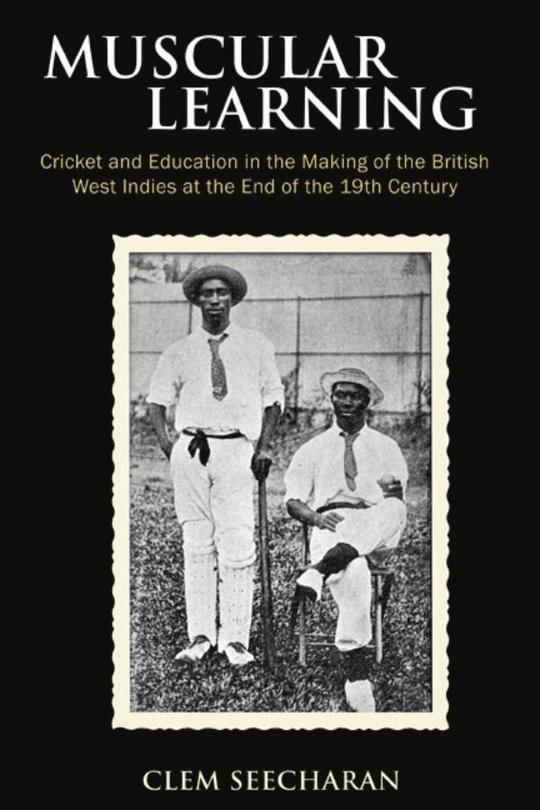
Mother India's Shadow Over El Dorado: Indo-Guyanese Politics and Identity 1890s-1930s
US$ 31.50
The publisher has enabled DRM protection, which means that you need to use the BookFusion iOS, Android or Web app to read this eBook. This eBook cannot be used outside of the BookFusion platform.
Description
Contents
Reviews
Language
English
ISBN
978-976-637-664-2
Contents
List of Illustrations
Acknowledgements
Abbreviations
Introduction
Part 1: The Shaping of the Indo-Guyanese People, 1890s–1918
Chapter 1: Amnesia and Myth in the Making of the Past
Chapter 2: Indology and the Awakening of India
Chapter 3: India’s Awakening and the Imagining of the ‘East Indian Nation’ in British Guiana, 1890s–1918
Chapter 4: India’s War Effort and Indo-Guyanese Identity with the Empire, 1914–19
Part 2: Finding a Voice: The British Guiana East Indian Association, 1916–25
Chapter 5: The Origin of Indian Politics in British Guiana
Chapter 6: The 1916 Political Watershed: The Egerton Recall
Chapter 7: Finding Their Feet: The General Elections of 1916
Chapter 8: The 1916 Watershed and its Aftermath: The British Guiana East Indian Association and Factionalism, 1919–25
Chapter 9: Indians and the Franchise: Embracing the Representative Principle, 1921–25
Part 3: The British Guiana Colonisation Scheme, 1919–29: An ‘Indian Colony’ Aborted?
Chapter 10: The Origin of the Colonisation Scheme and Local Responses, 1919
Chapter 11: The Origins and Context of J.A. Luckhoo’s Idea of an Indian Colony in British Guiana
Chapter 12: The First Nunan-Luckhoo Deputation to India, 1919–20, and the Response of the Nationalists
Chapter 13: The Pillai-Tivary/Keatinge Deputation to British Guiana, 1922
Chapter 14: The Second Nunan-Luckhoo Deputation to India, 1923–24
Chapter 15: The Ruimveldt Shootings (1924):The Colonisation Scheme and African-Indian Relations
Chapter 16: Maharaj Singh’s Deputation to British Guiana (1925) and the Death of the Colonisation Scheme, 1925–28
Chapter 17: Governor Guggisberg’s Idea of Colonisation, Andrews’s Sojourn and ‘Racial Balance’ in British Guiana, 1928–29
Part 4: Indians and Constitutional Change, 1916–28
Chapter 18: Racism, the Ruse of Development and Constitutional Change, 1916–24
Chapter 19: Governor Thomson, Race and a New Initiative to Suspend the Constitution, 1925
Chapter 20: Indians and the Suspension of the Constitution, 1926–28
Part 5: Indian Nationalism and Indo-Guyanese Identity, 1920–29
Chapter 21: Gandhi and Indo-Guyanese Pride in Mother India in the 1920s
Chapter 22: India’s Emissaries and Indian Identity in British Guiana – The Early 1920s
Chapter 23: The Context and the Impact of Mother India’s Luminaries in British Guiana: Jaimini and Andrews, 1929
Part 6: The Anatomy of an Awakening: Intellectual Images of India in Indo-Guyanese Thought in the 1930s
Chapter 24: Peter Ruhomon and Indian Identity in British Guiana
Chapter 25: Bifurcated Nationalism: African and Indian Identities in the 1930s
Chapter 26: J.I. Ramphal (‘Akbar Shah’) and the Education of Indian Girls, 1932–33
Chapter 27: J.I. Ramphal and His Encounters with J.B. Cropper: The Making of His Rebellious Temperament
Chapter 28: J.I. Ramphal (‘Akbar Shah’/ ‘LalaLajpat’) and the Sustaining Vision of Mother India, 1931–37
Part 7: In the Shadow of the Motherland: Indo-Guyanese Political Imagination, 1936–39
Chapter 29: Indian Opinion and Indo-Guyanese Identity on the Eve of their Centenary, 1936–38
Chapter 30: Mother India’s Achievements and the Making of the Indo-Guyanese, 1936–37
Chapter 31: The Indian Centenary in British Guiana and the Location of Indo-Guyanese, 1938–39
Conclusion
Chapter 32: The Legacy of an Illusion: El Dorado and the Race Question at the End of the 1930s
Bibliography
Index
The book hasn't received reviews yet.




